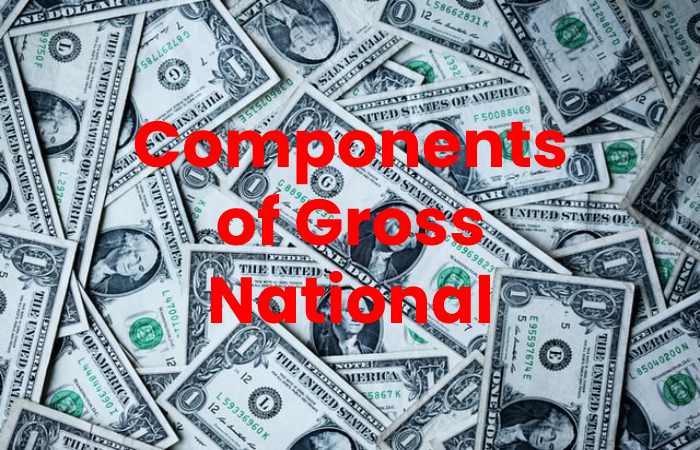Gross National Happiness (GNH) is a metric that measures the well-being of a society considering the healthy development of material and spiritual aspects as a whole.
The gross national happiness index (GNH) aims to measure the happiness of society. No more. However, it is worth asking what happiness means to us. We all understand happiness subjectively. Therefore, what for some may mean being happy, for others, may mean being unhappy.
With this in mind, and knowing that it is a subjective measure of well-being, we must understand how this index is constructed. We deduce its characteristics, advantages, and disadvantages only by knowing its components.
Table of Contents
Components of Gross National Happiness (GNH)

Gross national happiness is made up of several dimensions or elements. These dimensions are known as domains. Each domain is studied according to various indicators. The disciplines of gross national happiness:
- Psychological well-being
- Health
- use of time
- Education
- Diversity and cultural resistance
- Good government
- community vitality
- Diversity and ecological resistance
- living standards
These nine domains are studied through 33 indicators present in the survey. It is a multidimensional measure (composed of multiple dimensions). Among the indicators are mental health, the time we spend sleeping, ecological awareness or political participation.
The survey comprises more than 140 questions, and according to the Bhutan study centre, citizens usually take between 5 and 6 hours to answer all of them.
How is Gross National Happiness Calculated?
The results included based on the previous metrics to calculate gross national happiness. In this sense, it is based on the concept of sufficiency. While if a citizen has answered more than 50% of responses that ‘reflect’ that the respondent is happy, they are not considered to be in the unhappy group.
That is, four groups are established:
- Unhappy: They do not exceed 50% of responses that reflect happiness.
- Little happy: Between 50-65% of respondents remember that they are so glad.
- Widely comfortable: Your results are in the 66-76% range.
- Deeply happy: They are the most optimistic. They have responded to more than 77% that they reflect happiness.
Advantages and Disadvantages of Gross National Happiness
Once we have understood where the results come from and how they obtained, we must point out that all that glitters is not gold. In other words, this indicator, like all others, has pros and cons.
Among the main advantages are:
- They take into account dimensions more related to well-being.
- The surveys are understandable for the majority of the population.
- All indicators have the same weight.
- It gives a complementary measure of well-being to economic growth.
Among the main disadvantages we can mention:
- An excessively long survey can cause inaccurate results.
- The conception of happiness is very subjective.
- The questionnaires may not collect all possible answers.
What is meant to measure Gross Domestic Happiness?
Gross national happiness (GNH) or gross domestic happiness (GNI) is an indicator that measures the quality of life in more holistic and psychological terms than gross domestic product (GDP).
Happiness is more important than GDP
All human beings have a non-negotiable goal. We all want to be happy. When we not satisfied, money and the economy go to an undoubtedly irrelevant plane. Studying people’s happiness, given its subjectivity, can be a romantic task. However, in the Himalayas, they have. Do you want to know what the results say?
The International Monetary Fund (IMF) has brought up this issue due to the latest gross national happiness index (FNB). The results have not remained long in coming and reflect that the population under study (Bhutan) is, for the most part, a happy people.
The concept of happiness complicated to measure. Especially since we all have a different conception of what it means to be happy, using mathematics and statistics can be dangerous since the results can have biases of various types.
Economic Growth And Happiness
The best-known measures to measure the development of a society and its level of well-being usually revolve around income metrics. For example, the median wage, GDP, or GDP per capita. This approach is not useless, but it has obvious limitations.
However, gross national happiness (GNH) intended to complement (not replace) these income measures to provide a more realistic view of well-being. Economic growth is worthless if it does not bring us happiness and well-being.
Happiness is not incompatible with growth
In Bhutan, they have been clear about it for 50 years. Social welfare, respect for the environment and happiness are the central aspects on which everything is based. And also, the economy is, in this sense, relegated to second place.
Western society has a mental illness and does not know it. They live constantly worried stressed, and they go out of their way to work and project their happiness outwards. For them, it is much simpler: everything you need to be happy is within you.
Therefore, the graph offered by the IMF leaves no room for doubt. With this philosophy, Bhutan has multiplied its GDP per capita by 6. In the same period, its life expectancy has increased from 45 years (1980) to 70 years (2016).
However, at the educational level, school enrollment has gone from 19% (1970) to 100% of students enrolled at the official age to attend primary school (2012). The incidence rate of poverty has gone from 23.2% in 2012 to 8.2% in 2017.
And as if all this remained not enough, CO2 emissions per capita are 16 times less than in the United States, 6 times less than in Europe and more than half of what polluted per capita in Latin America. Still, the latest results from the Gross National Happiness Survey indicate that only 10% of the population considers themselves unhappy. Or, put another way, 90% of the population finds themselves happy.
Conclusion
Gross National Happiness, sometimes called Gross Domestic Happiness, is a philosophy that guides the government of Bhutan. It includes an index used to measure the collective happiness and well-being of a population.
Also Read: How to Make a Successful and Effective Marketing Campaign? 2022

